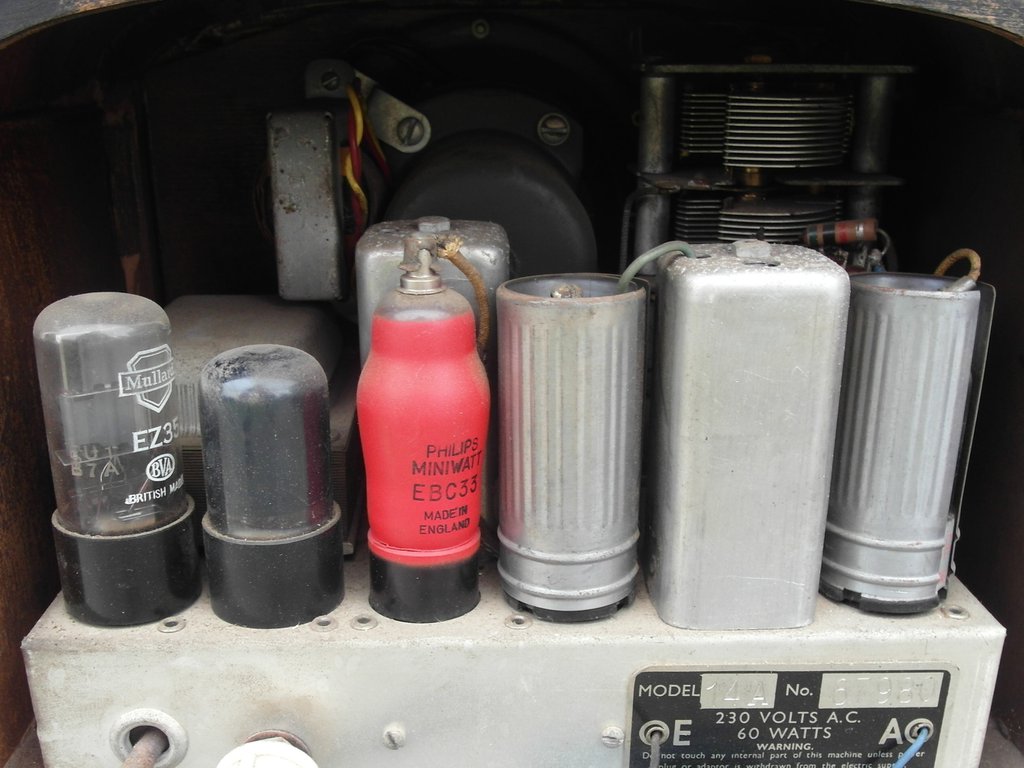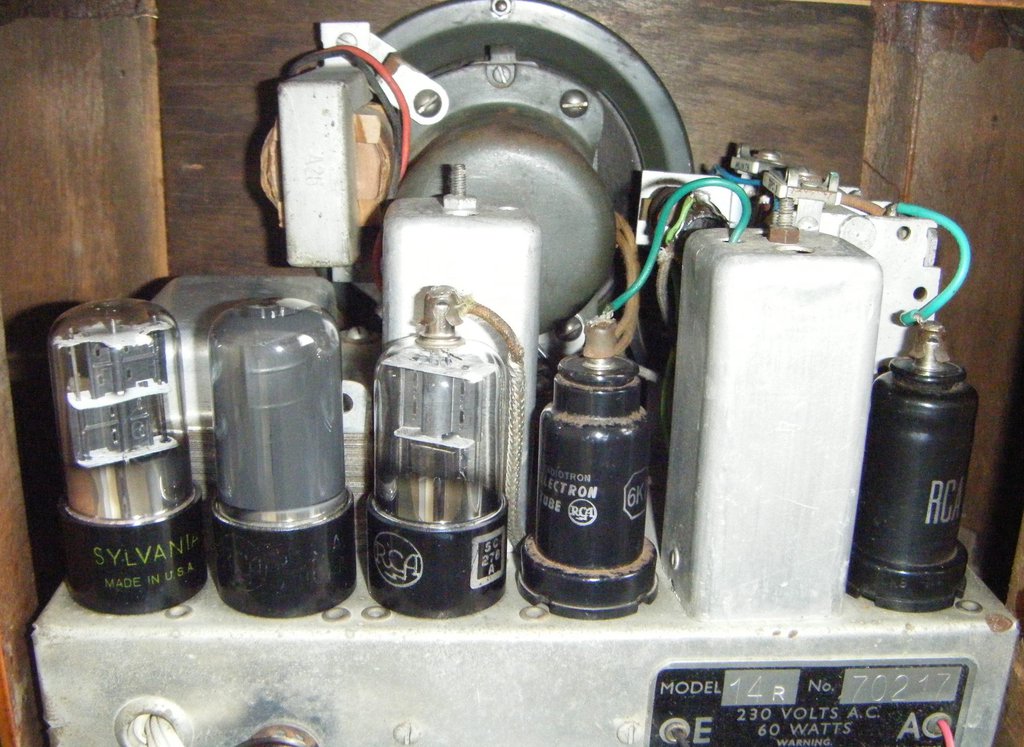Other radios based on the same chassis:
One of the Columbus 'Miniatures' (which also included the model 6 at this time).
There were two model 14 designs using the same 5-valve broadcast band chassis, the Gainsborough (this model is often referred to as the tramcar due to its unusual shape), and the Raeburn.

Columbus model 14 'Gainsborough'
Bill Heinz noted in his reflections of working at Radio Corp that the model 14 had a special 'holiday time' assembly line of schoolboys - and this led to a lot of dry joints and other issues in the sets. Those same schoolboys also had training in-house to learn about radio by studying the Hikers One. What an opportunity that would have been.

HUTT NEWS, 13 AUGUST
Intermediate Frequency: 455kc/s
Frequency Bands: 1
Chassis Notes(most schematics can be clicked to download a full size version)
Released over several years, there was a model 14 chassis, a 14A and a 14R. From examination the GT valves with metal shields from the 14A appear to be changed to metal valves in the 14R - although this could have been done by owners over the years though. 14A models appear in 1945-46 and the 14R appears to be 1946-48. 14A models have an upright tuning condenser, while later models (R-variants) have it more traditionally flat-mounted.
Notes on the schematic show that models with dial scale part# OE22 use a 3-gang Plessey tuner with one gang unused.
 |
 |
| 14A chassis | 14R chassis |
General Construction Notes for Radio Corporation of New Zealand Ltd:
The first digit of the serial number typically indicates the year of manufacture of RCNZ chassis' (although not the decade - that requires a little knowledge of the valves, construction, etc). Sets from around 1934 onwards were often (but not always) constructed in a distinctive pressed 'baking pan' style chassis, seemingly unique to RCNZ.
Model codes beginning with a 0, for example the model 051, are Osram valve versions of the model without the leading 0. Technically the 0 should be an O (for Osram), however the digit 0 was used throughout the site before this fact was discovered.
The E suffix indicates a magic eye option is fitted (in models which were available with or without, such as the model 25).
A and B suffixes appear to be simply updates to the current model, R also appears to be simply an updated model ('R'edesign, perhaps?)
P indicates either a permanent magnet speaker version of a model which also came with an electromagnet speaker (the model 26 for example), or a portable model (like the model 694P). This suffix was used in the mid 50's when Radio Corp was changing over.
N and M indicated miniature valve versions of a model which started with all (or a mix, ie: model 5) of larger valves. One of these two codes may indicate a transitional mixture of octal and miniature - clarification is required.
S often indicates a stereo model. It can also indicate 'self-biased' in the transition period between back-biased and self biased sets where there were models with both methods employed (53S for example)
Finally, other suffixes and prefixes make occasional appearances in the RCNZ lineup - like the 66W (a variant of the long-running model 66) and the 75XA (a 10-valve version of the model 75 with a separate amplifier chassis).
Model nicknames are often sourced from either newspaper advertising, company literature or the NZ Radio Traders Federation official trade-in price books (Particularly Courtenay models from this publication)
In 1954, model numbering changed, to begin with the number of valves (ie: 501 - 5 valves, 1006 - 10 valves, etc) although the final 2 digits don't appear to have much significance. Middle digits of 5 (portable) or 6 (mantle, including clock radio) are used on the AWA-designed plastic-cased sets.
| YEAR | MODEL NAME |
|---|---|
| 1945 | Columbus model 14 'Raeburn' |